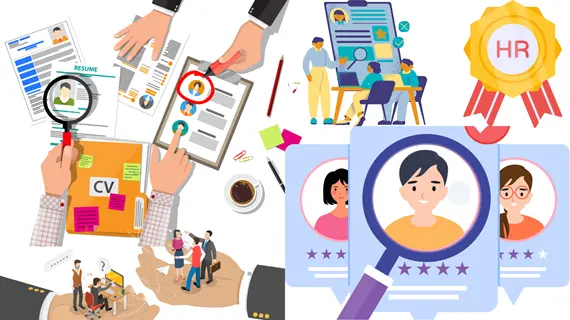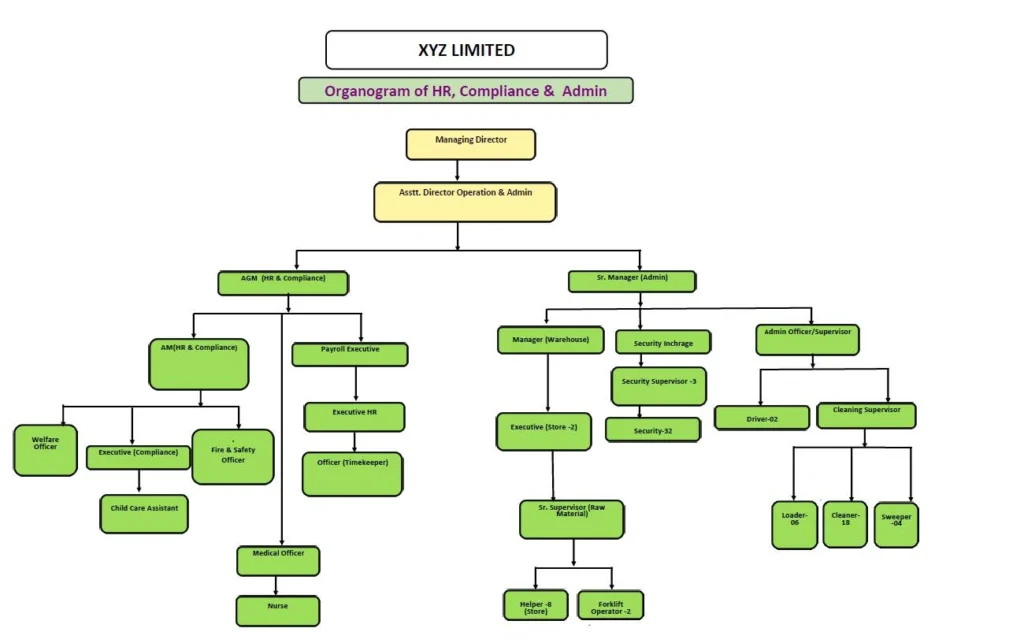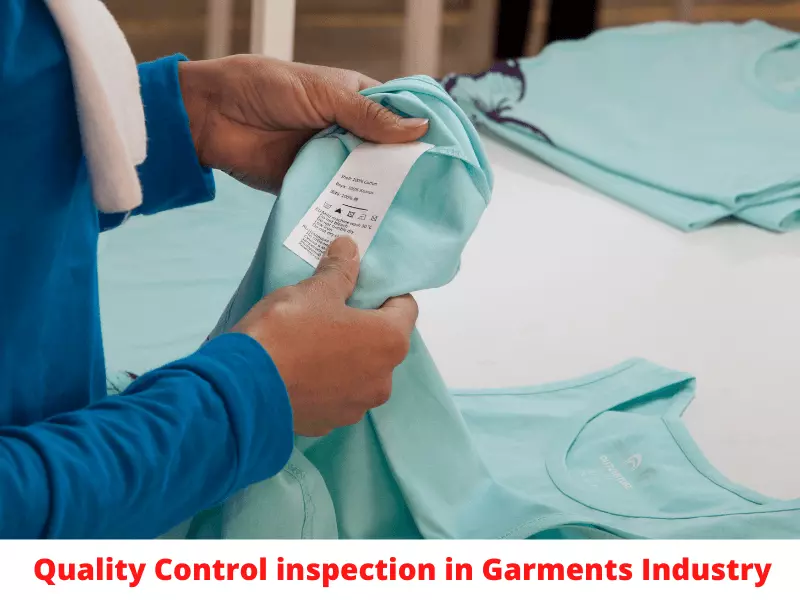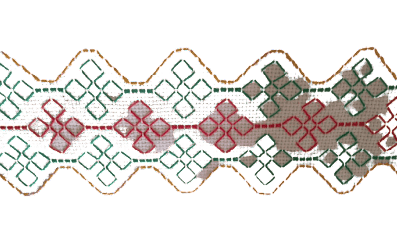Functions of the HR Department in the Garments Industry
In Bangladesh ready-made garments in short form RMG industry is a major contributor to the country’s economy. It’s a global hub for garment manufacturing and sourcing. It accounts for over 80% of its export earnings. In 2023, Bangladesh retained its second-place position in RMG exports. As per the BTMA [3], there are 4621 apparel industries in Bangladesh and 1511 textile mills under the BTMA, with 433 yarn manufacturing mills, 827 fabric manufacturing mills, and 251 dyeing-printing-finishing mills. Over 50.17 lakh people are working in the garment sector in Bangladesh according to the country’s state minister for labor and employment Nazrul Islam Chowdhury at Jatiya Sangsad in June 2024. To run a garments industry, there are different departments such as production, quality, supply chain, merchandising, accounting, HR and etc. In this article, we are discussing the Functions of the HR Department in the Garments Industry.

This different department The Human Resources (HR) department plays a vital & crucial role within an organization by providing core functions to the business through managing the people, such as; employee recruitment and hiring, collection, and storage of employee data, payroll, benefits administration, disciplinary actions, employee engagement, training, performance management, compliance, and safety. At present HR is playing its role as a business partner to grow business and increase profit by taking different strategic planning for talent development.
In general core HR functions are almost the same and related to manufacturing units or any corporate or multinational countries. But there have been changes between the country-wise rules & regulations about pay scale and some legal practices. Also, the company-to-company has some internal strategies & policies about organizational attendance, leave, compensation benefits, etc.
In this article, we will mainly discuss the functions of Garment’s HR. Bangladesh’s RMG industry is the largest industrial sector in the country. It’s known for its green garment factories, manufacturing capabilities, compliance, and factory safety. Already we know that Bangladesh has more than 4600 hundred garment industries and there are 50.17 lakh workers in the garment industry in the country, of which 55.57 per cent—27.88 lakh are women workers.
Why HR department is so important in the Garment Industry?
We know that every organization or industry is not only made of brick but built with 4 m’s which means; a) Money b) Materials c) Machine, And d) Men
Money means capital, Material means the raw materials used in the process, including their quality and storage, and Machine is the physical equipment used in the process, including its maintenance and installation which is operated by men. And last Men are about the people, including their skills, training, motivation, and behavior. Obviously, People utilize money, machines, and materials. So, by hiring the right people and developing people efficiency through training and mentoring, HR helps to achieve the business objectives.
Before starting any industry first appoint HR & compliance people because work planning, Manpower budgeting, job analysis, job design, planning personnel needs, organogram building, hiring required manpower, ensuring facilities, making initial policies, etc. all done by the HR department. So, we can understand why HR is a vital department for an industry.
In some garment industries under HR department is involved in the Administration & Compliance department and some garment industries create different departments as Bangladesh aspect. HR functions are played by different employees by performing different roles. At corporate or MNCs generally, a welfare Officer or fire safety officer post is not mandatory. But in any garment, this post has in mandatory option. As per Bangladesh labor law 89(8), if any factory has more than 500 workers, there should be a welfare officer, and as per the Bangladesh Labour Rules (BLR) Section 55 (12) states that factories with 500 or more workers must have a full-time fire officer. Except this Payroll, Compliance, admin, and recruitment officer role is played. And HR & Admin head follows the overall functions and takes initiative for Organizational Development intervention. As a sample HR department organogram as follows:

In the garments industry, HR workflows are designed to streamline and automate various HR processes, ensuring efficiency, consistency, Promotions, and compliance, workplace safety, and disciplinary actions with policies and regulations. HR workflows cover various activities throughout the employee life cycle, from recruitment and onboarding to performance management, leave management, benefits registration, time-off requests, and offboarding. To better grasp the meaning of workflows, let us consider the examples of HR workflows.
What are the Core Functions of the HR Department in the Garments Industry?
Recruitment & Onboarding
HR makes workforce planning and filling up vacant positions a requirement. When a position opens HR gives a circular, conducts interviews verifies employee background for this vacant role, negotiates and finalizes the candidate, and finishes formalities for joining. After joining welcome, the new employee. Arrange orientating training introduces companies to goals and objectives and also introduces with different department relate to new employee’s necessity toward making his easy with company culture.
HR Papers documentation:
HR documents are records of an employee’s employment relationship with their employer. They are used to communicate with employees and to comply with legislation. Employee personal files, HR policies, events and actions taken during the employment relationship, performance evaluations, disciplinary actions, employee personal information, benefits and payroll information, training records, HR-related Office letters, Compliance, Fire, and Safety work records all will be documented.
Performance management:
Performance management workflows are organized processes you design to ensure your employees meet their goals. A performance workflow would contain key components including setting goals, conducting performance reviews, and providing feedback.
A performance management workflow would include setting measurable goals that align with your company’s objectives. Then, integrate systems that can automate the scheduling of employee performance reviews and ensure they receive prompt feedback.
Employee training and development
Employee training and development workflows are designed to enroll employees in relevant training programs, track their progress, and collect feedback on the training process. In practice, the process might look something like this: after an employee expresses interest in professional development.
Sometimes Company buyers have some specific requirements about the topic. The responsible department makes a training schedule every month took the sign from the relevant department head. And conduct all the training & keep records to show on audit day.
Attendance, Leave, and absence management
This type of HR workflow involves organizing a set of processes to handle the Working Hours, in time, out time, break time, Short Leave, absenteeism, and leave requests of employees. Most of the; company uses cloud-based software or HRIS to track records.
Payroll processes
A payroll workflow is a sequence of organized tasks you create to ensure your employees are paid accurately and on time. This HR workflow makes it easy to calculate salaries, deduct taxes, generate payslips, and initiate payments.
The workflow would involve having software that calculates each employee’s gross salary. After that, it automatically deducts contributions such as taxes and health insurance premiums. Then, the payroll workflow ensures the software generates payslips that outline employees’ deductions and final take-home pay and then initiates direct deposits.
Offboarding
Offboarding is the process of managing an employee’s departure from a company. It can be voluntary or involuntary and can happen for reasons like resignation, retirement, or termination, conduct an exit interview,s and ensure paying billsare on time as law.
Conclusion
HR team of garment and textile industries have a very challenging job and responsibilities. People management is not an easy task for anyone but, the HR department works on their professionalism and does it very finely. So, in the textile and garment Industries HR manager plays and very important role in the overall success of the organization. So, an HR manager should be a very responsible person who drives many things for the betterment and overall growth of the organization.
Not only in the garment industry but in every organization, HR plays a business partner role. By developing employee skills, HR creates next-level growth for the company. HR has involvement in all daily functions. HR plays the role of guardian to the employees, always being there for them. Not only professionally, but HR also gives various suggestions for personal and family well-being.
HR arranges different programs to make the workplace enjoyable. For work-life balance, HR also takes many strategic planning and implementation steps. So, there is no need to say anymore that the Functions of the HR Department in the Garments Industry, are very vast to every individual.
- Author of this Article: Maksura Jahan Mitu
- Email: [email protected]
- Linkedin ID: Maksura Jahan Mitu
- You may love to read: Responsibilities of HR Manager in the Garments Industry
- Welfare Officer Job Description in the Garments Industry
- Social Compliance Audit Checklist in the Garments Industry
- Job Responsibilities of Fire Safety Officer in the Garments.


